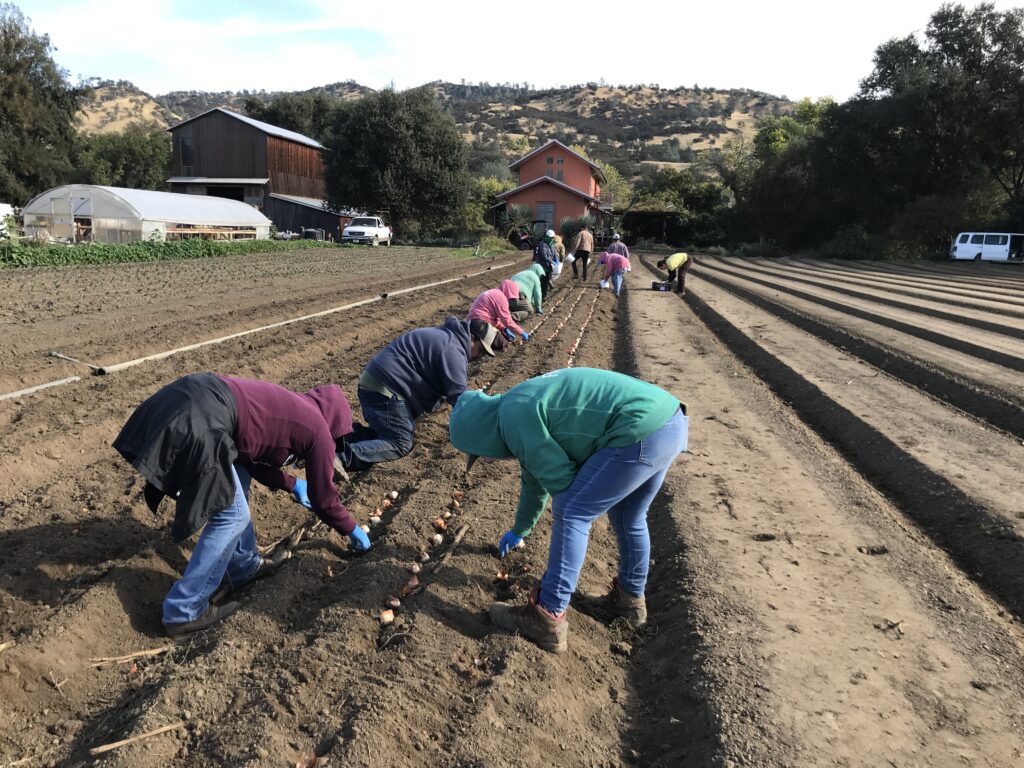
It’s another flower update! Flowers are a big part of what we do, so we want everyone to be in the know.
As described last week (which you can read here), this time of year is when we plant most of our spring flowers. On Thursday and Friday, the flower team aided by some interns and Alfonso’s group planted about 2/3 of our bulbs (tulips and iris) and corms (anemones and ranunculus). In total we planted 10,000 tulip bulbs, 7,000 Dutch iris bulbs, 11,000 anemone corms, and 7,000 ranunculus corms. There’ll be a bit more planting once we receive the rest of our underground roots!
Quick sidebar for the more inquisitive folks out there:
What’s the difference between a corms and a bulb? Corms are underground stems that store food and fuel plant growth, but they are different than bulbs. Bulbs are made up of layered fleshy scales that are modified leaves, surrounding what will become the flower. A corm is closer to a real bulb but the storage tissue is the stem itself rather than the modified leaf tissue. So if you cut into a bulb, it has layers, while a corm will be solid. Other corms include gladiolus, freesia, and crocus.
Here are some of the flowers we planted (tulips, then ranunculus, then anemones) and what each will eventually look like once they bloom:
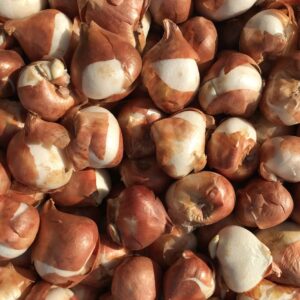
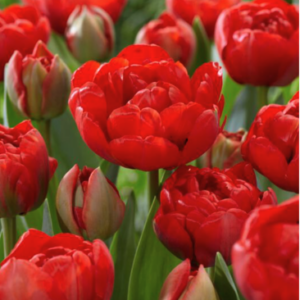

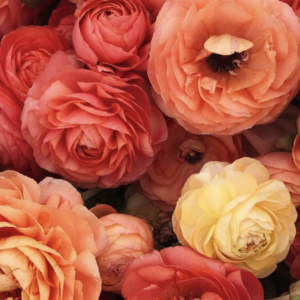
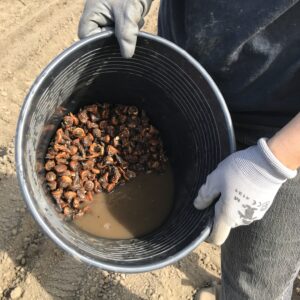
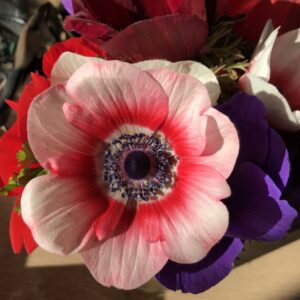
Planting these flowers is similar to the process for our transplants – we use the same tractor implement to make three furrows per bed, then the plant is added to the furrow, then tucked in. But there are some key differences:
- We’re just planting the underground portion of the plant, so they get completely covered with soil, like a seed. The tulips are planted six inches deep, iris are planted four inches deep, and the ranunculus and anemones are planted two to three inches deep.
- There’s more prep work involved: we have to soak the corms for a few hours to hydrate them and we buy pre-chilled bulbs. Tulips require 10-12 weeks of consistent soil temperatures of 55 degrees or lower. While the Capay Valley feels chilly during winter, it’s not cold enough for optimal tulip emergence so we get bulbs that have spent 6-12 weeks in a cooler before being sent to us.
- Some people drop the bulbs or corms and other follow behind to push them down to the correct depth and completely cover with soil. With transplants, we just cover the potting soil.
- After planting, we’ll apply compost to the tops of the beds. It acts as a mulch and provides additional nutrients to the flowers.
Here’s a quick video showing how we planted our tulips, anemones, and ranunculus last week:
Other farms plant differently, especially with tulips (many folks, especially when dealing with less space use high density trench planting) but given our climate, the space we’re working with, and years of experimentation, this is what works for us!
This is a lot of work for flowers that aren’t in the ground that long. We’re planting these flowers now and will start harvesting in February. With our tulips, they’re a one-harvest crop. We harvest by taking the bulb out of the ground. With our snapdragons, it might be six months before we start to harvest, and we’ll get many harvests from a single plant.
BUT in February and March, when it can feel dreary and grey, we know how much everyone appreciates the pop of color that these flowers bring, making it all worth it.
Elaine Swiedler, CSA Manager
